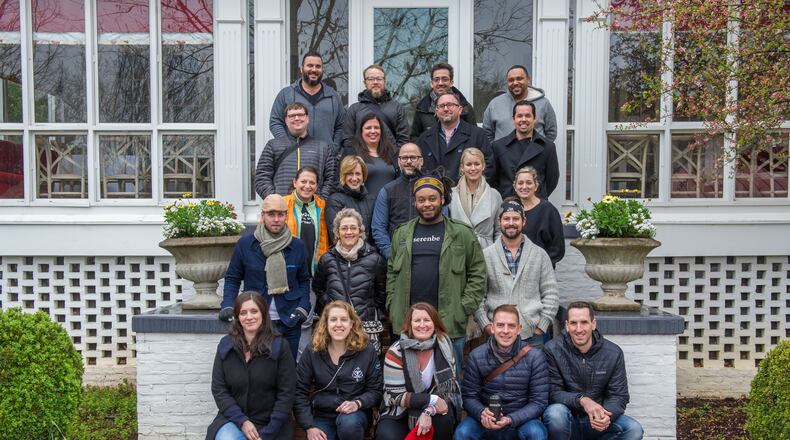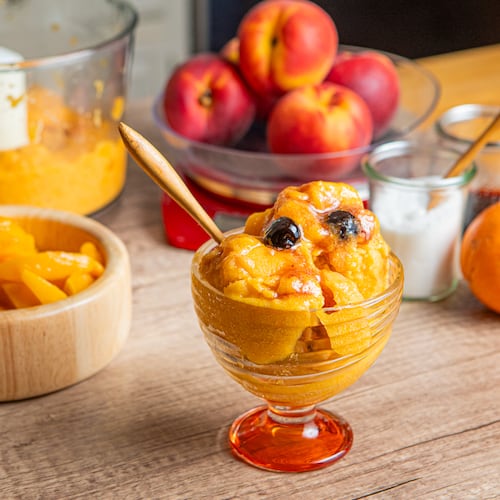It’s always a pleasure to be in the company of fellow AJC dining critic Wyatt Williams. He’s always juggling a plateful of interesting projects, which makes for great conversation. Plus, he’s an all-around affable fellow, and he has a way of keeping you comfortable when you show your true colors, particularly when those colors are not the ones that the popular kids are wearing.
“I love that!” Wyatt said after a waiter at Storico Fresco, an Italian restaurant and market in Buckhead, had just whisked away two plates that I had requested be boxed to take home. The first was a bowl, now one-third full, of black-as-night nero pasta studded with mussels. The second was my portion of empty mussel shells, the meat of these bivalves now happily swimming in my belly.
A bit embarrassed, I told Wyatt that, when I eat out, I try to remember to ask the staff to box up bones and seafood shells, apart from leftovers that usually translate into tomorrow’s lunch. My modus operandi is to wash and bag the bones and shells, then store them in the freezer until they amount to enough to fill a stockpot. These homemade stocks are grand stuff for soups and risottos, for stir-sizzling vegetables and a host of other applications. The seafood scraps then move on to the compost, where they keep our worms content while enriching the soil.
Instead of raising an eyebrow to all this fuss over trash, Wyatt cheered.
Maybe going to such lengths to use up every last ounce of fuel from food is extreme, but it’s extreme that 40 percent of food is wasted in the U.S.
Food waste is a hot topic these days. Locally, it enters into the picture at the Museum of Design Atlanta's current exhibit, "Food by Design: Sustaining the Future." The exhibit, which runs through May 7, features projects by designers, scientists, engineers, farmers, policymakers, grocers and other industry innovators who are finding solutions for some of our toughest food questions.
Food waste is also a big talker in the restaurant industry. Consider these facts:
» Every year, American consumers, businesses and farms spend $218 billion (roughly 1.3 percent of this country’s gross domestic product) on food that is never eaten.
» Nearly 85 percent of all food waste happens in homes or consumer-facing businesses, such as restaurants, retail grocers and institution cafeterias.
» The average amount of purchased food that is wasted in a full-service restaurant is 11.3 percent.
How can restaurants reduce waste? That was one of a number of questions raised during the James Beard Foundation Chefs Boot Camp for Policy and Change that took place this month in Serenbe.
Fifteen chefs from around the country gathered for the program (that has a waiting list of 800 names) to learn how they can become more effective leaders for food-system change. The group explored issues surrounding, among others things, food waste.
Conference moderator Katherine Miller walked these chefs through the alarming food waste statistics. Miller’s next question: What steps could they and their restaurants take?
It’s a three-part solution that includes what happens at the table, within the community and with those who shape policy.
What happens at the table entails ways to prevent waste. Smaller plate sizes and smaller portions are a couple of actionable measures that restaurants can employ. (I’d love to hear how you feel about that. Would you be in favor, as long as prices are aligned with portions?)
Miller also cited as a thought leader for this topic Atlanta chef Steven Satterfield, a JBF Boot Camp alum and the cookbook author of “Root to Leaf,” which offers ideas for no-waste cooking, primarily of produce.
The moderator noted that at Satterfield’s restaurant Miller Union, they decreased the size of the Slim Jim waste container to pay closer attention to waste. Was the container filling too quickly? If so, why? Was the pre-consumer waste truly trash? What chucked items might have been turned into food? Reserving carrot tops to make pesto is just one of the ways that restaurant kitchens can turn trash into treats, Katherine Miller said.
In that same vein, she spoke of reclaiming flavor and value (and passing that along to you, the customer). Essentially, this entails fashioning “garbage” into enticing food you want to order. It brought to my mind the fruit skins that Ryan Smith has turned into crispy cracklins at Staplehouse. And of the “Garbage” section — my favorite — in Gabrielle Hamilton’s cookbook “Prune,” which has smart ideas to repurpose food such as Parmesan rinds, limp celery and so much more.
While we’re seeing more messaging that posits “garbage” food as hip and cool, there is another message that restaurants can keep sending us as diners: It’s perfectly OK to take it home.
Until attending this Chefs Boot Camp for Policy and Change, I was unaware that what I had expressed with embarrassment to Wyatt had a name: “customer shame.”
You want to take your leftovers home? Do it, and don’t feel bad about it, no matter how high-end the eatery. Cooks don’t want to see that food come back to the kitchen. But then, be sure to eat those leftovers. Don’t let them die a slow death in the fridge.
Some waste is beyond our control as diners. Restaurant operators, particularly those in independently owned restaurants, may want to participate in a recycling program. But they have to penny-up for it, this in an industry already marked with slender profit margins. It also takes time and effort to redistribute excess food to charitable organizations such as food banks. It means advocating for changes in labeling regulations (“Sell by” and “use by” dates are not streamlined. Currently, there are 41 different regulations that dictate when a restaurant has to throw away a gallon of milk and other foodstuff.)
Yet, a lot of the solutions for combating waste seem to revolve around the very basic notion that all of us must be more mindful. Before the chefs broke into small groups to brainstorm, Miller flashed the following on the overhead screen: “Wasting food wastes everything: Water, labor, food, money, love.”
The James Beard conference occurred days before I shopped at H-Mart in Doraville. The store happened to have a sale on red snapper. I snapped it up. When the fish butcher asked me how I wanted it prepped — they have five different options that range from simple wash-and-clean to gut to fillet — feeling lazy, I chose fillet, yet soon regretted it as I watched head, tail and skin all get sliced and diced and thrown into a Slim Jim.
That night, when I served the snapper, I told my family about my blunder. My high school son replied that I shouldn’t worry since “the fillet is the best.” No, I said. Head to tail, root to leaf — all of it matters.
About the Author
The Latest
Featured



